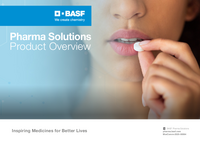Enabling Transparency For Sustainability
Is your case study linked to an ‘ugly truth’ or a ‘key success factor’?
At BASF, supporting our customers with sustainability and addressing climate change are key success factors. This journey began with a realization: we could play a significant role in sustainability for our partners. The challenge was clear, and we decided to be part of the solution.
What does the case study help tackle?
As a supplier of raw materials, we understand that the products we produce contribute significantly to the carbon emissions of our customers. By providing transparency on product carbon footprints (PCFs), we empower our customers to make informed decisions that are not only good for their business but also for the planet. By exploring what contributes to the PCF of our current products, we can collaborate with our customers to produce more sustainable options in the future. We view this as a partnership for a better, more sustainable future.
What was the outcome and how did you measure it?
 Michael Morgan Royko
Michael Morgan Royko
In 2023 BASF made a big jump by becoming the first company to have our PCF calculation system methodology validated by TüV Rhineland, following the Together for Sustainability methodology. This achievement enables BASF to provide our customers with the PCF of all 45,000 sales products we offer, a level of transparency that sets a new standard for our industry.
Who was involved (departments/roles)? How did you justify it to the business?
A key change for BASF was to shift sustainability from only an EHS concern to being a core aspect of each business unit. This shift required the efforts of various departments, including procurement, digitalization, along with the guidance of a dedicated corporate sustainability team. The business units understood that transparency is vital to support our customers. By enabling visibility over supply chain emissions, we provide our customers with the tools needed to act sustainably.
What were the key success factors?
BASF has a long history of focusing on decarbonization and waste reduction with a 58% reduction in emissions since 1990*. We also pioneered reporting our corporate carbon emissions. BASF is the only industrial enterprise to report a comprehensive corporate carbon footprint since 2008. Building on this strong foundation we turned our attention to determining the individual carbon footprint of our products.
This not only enabled supply chain transparency but also identified decarbonization pathways. For instance, we reduced the PCF of our polyvinylpyrrolidone product (Kollidon® 30), to be 30% lower than global market average, showcasing a tangible outcome from our efforts.
What are your watch-outs for others attempting this?
Not all PCFs are created equal! Utilizing primary data is vital to accurately calculate supply chain emissions, but it is crucial to partner with trusted suppliers that have their calculation methodologies verified by 3rd parties.
How would you recommend those with less resources attempt this?
Partnering with suppliers that already provide high quality PCFs can be a game changer. This allows access to high-quality primary data without having to invest heavily in calculations or estimations. Instead of reinventing the wheel, leverage existing methodologies that are already in place.
Who were the main drivers (the people that were boots on the ground), and the main leadership sponsor?
The successful execution of this project relied on the concerted efforts of teams in corporate sustainability, digitalization, and business leadership, all of whom played an integral role in bringing this vision to life. Our main leadership sponsor was our CEO, who saw the value in providing this transparency.
Originally published* by Sustainable Procurement Pledge.
*This is a community-sourced case study. Please note: The Beyond The Guide Deepdive: Pharma & Life Sciences Supply Chain has benefited from the input of individuals, companies, and organizations. The views expressed in The Beyond The Guide Deepdive are not necessarily those of the Sustainable Procurement Pledge. SPP accepts no liability for content.






